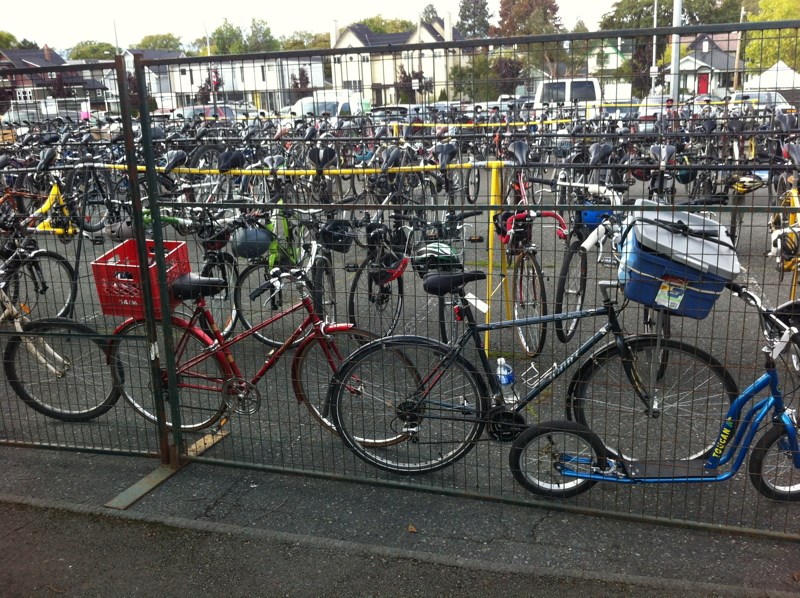A commentary by a senior who rides her bicycle for most of her errands.
I was nine when I got my first bicycle. I needed it to go to and from school, because the school bus to our neighbourhood had been cancelled. In our little community, north of Montreal, cyclists were taught the rules of the road, took a test and if successful were issued a numbered bicycle licence. We recertified every year.
There was a large, paved area in the middle of the community and, as soon as the weather became reliable, usually the first Saturday in May, volunteers from every walk of life would get out early and paint the pavement with every colour and type of line that a person might encounter on a road.
Orange cones and portable stop signs were hauled out of storage and placed strategically, so that different types of road situations were simulated all over the area.
Cyclists arrived with their bicycles at the pre-arranged time and began the test. The first was a test of mechanical function and balance, applied by volunteers from the two garages in town.
There was a slalom of orange cones to be done, at different speeds. After that, the road test began, with volunteers from our local constabulary to judge our ability.
They would also create situations for us to respond to, and score our performance. Anyone who failed any part of the test would be sent off to another part of the area where a volunteer would give instruction, then send the candidate back to the part of the test he or she had failed, to try again.
Everyone passed by the end of the day.
A uniformed police officer with a large ledger was set up at a card table at the edge of the action. He recorded the names and addresses of us all, our bicycle serial numbers and our licence numbers. Our licences came in the form of long, narrow, three-cornered felt flags — bright yellow with dark blue print — which we tied to the springs under our saddles.
They fluttered out behind us when we rode. Anyone could see whether or not a cyclist was licensed. We were proud of our skills and often discussed “traffic issues” amongst ourselves.
I’ve cycled in many parts of the world and never had any trouble, thanks to my early preparation.
To anyone contemplating cycling in sa���ʴ�ý, I’ve often said that the most dangerous thing on the road in sa���ʴ�ý, is a Canadian cyclist.
It’s not realistic to expect a bicyclist with no experience or training to navigate Victoria’s new cycling network — to go wheeling down a narrow lane, with oncoming traffic equally inept, in an enclosed pathway, with pedestrians totally unschooled crossing here and there.
All this with not the first piece of information given out as to what to look for in changes to lights, patterns painted on the pavement in various colours, posts cemented into place here and there, rises and falls in the level of the pathway. Add in bewildered and frequently offended motorists at intersections trying to interpret a whole new battery of lights and signs.
It makes for a hilarious story, but it isn’t funny.



